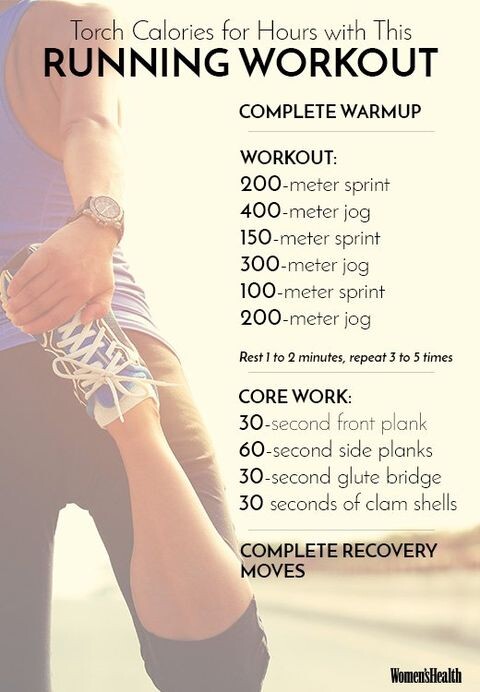Running News Daily
Running News Daily is edited by Bob Anderson. Send your news items to bob@mybestruns.com Advertising opportunities available. Train the Kenyan Way at KATA Kenya and Portugal owned and operated by Bob Anderson. Be sure to catch our movie A Long Run the movie KATA Running Camps and KATA Potato Farms - 31 now open in Kenya! https://kata.ke/
Index to Daily Posts · Sign Up For Updates · Run The World Feed
Experts Explain EPOC—the Body’s Ability to Burn Calories After You’re Done Exercising
It’s all about that after burn effect.
You probably know that during a tough workout—whether you’re running intervals or clocking long steady miles—you’re also torching calories. But the cool part? Even after you’re done with your run, your body continues to burn more energy. This process is called excess post-exercise oxygen consumption (EPOC), and it’s what people generally refer to as the “afterburn effect.” (If you’ve ever been to Orangetheory Fitness, it’s also what the brand’s programming is based on and why a main goal of class is to hit that orange heart rate zone—so you experience EPOC.)


We spoke with two certified strength and conditioning specialists to get the basics on what EPOC actually is and what it means for runners. Here’s what to know.
What Is EPOC?
EPOC is simply your body’s way of cooling down after exercise. Our bodies use oxygen to produce energy while we’re exercising, and exercise that uses more oxygen—anything that’s more intense, such as an interval workout—burns more calories.
After exercise, your body needs to rebalance its hormones, restock its fuel stores, and repair damaged muscle tissue and cells to help it return to its normal state, according to Janet Hamilton, C.S.C.S., owner of Atlanta-based Running Strong, which offers coaching and rehabilitation services to runners. It expends energy to help accomplish this. As a result, your body continues to burn calories even after your workout is completed.
To make EPOC easier to understand, Pete McCall, M.S., C.S.C.S., likens it to driving a car.
“If you do a long drive and you turn your car off, your car isn’t going to become cool automatically,” he says. “It’s still going to be warm for—depending on the length of the drive—anywhere from one to five hours afterward.”
How EPOC Affects Runners
The more intense your workout is, the more EPOC you’ll likely experience. That’s because in order for EPOC to occur, your muscles have to work to a point of fatigue. So if you’re doing something like speedwork or strength training, you should theoretically deplete your muscles’ energy by the end of your session, according to McCall.
That being said, the amount of calories the average person will burn with EPOC isn’t as much as you’d think.
“If you do a moderate to hard workout, you’re going to have an EPOC effect of maybe two to 10 hours. But it’s not significant—it might be anywhere from 150 to 200 calories in the course of that time, which is only about 20 calories an hour, maximum,” McCall says. In fact, according to research published in Applied Physiology Nutrition and Metabolism in 2014, cyclists and runners who participated in speed interval training burned between 45 to 65 calories within the first two hours following their workout.
The EPOC effect from a longer, slower run—particularly those easy day runs—isn’t as big because you never deplete your muscles’ energy all the way.
What EPOC Means for Your Workouts and Fueling
As a runner, it’s definitely a good idea to incorporate high-intensity workout sessions, such as speedwork and lifting, into your routine. Not only will doing so allow EPOC to occur, but strength training on a regular basis can help boost your endurance, strength, and speed when it comes to running.
While you probably won’t burn an insane amount of calories postworkout, it’s still something. That means there still is some extra calorie burn, so you don’t want to risk under-fueling, Hamilton cautions. You need to be consuming enough to account for the number of calories you’re burning both during and after your workout.
“If you’re already giving your body the least amount of fuel it can possibly get away with, [muscle] tissue repair and regeneration [after a hard workout] is probably going to get shortchanged, and that’s when you run into injuries,” she says.
McCall agrees, saying it’s a good idea to stagger your workouts, so that if you do high-intensity one day, you should do something with a lower-intensity the next. That’s because the day after a high-intensity workout, your muscles may not have recovered 100 percent, so you don’t want to make them work as hard as they did previously—you want your body to be able to sustain itself going forward.
by Runner’s World
Login to leave a comment




